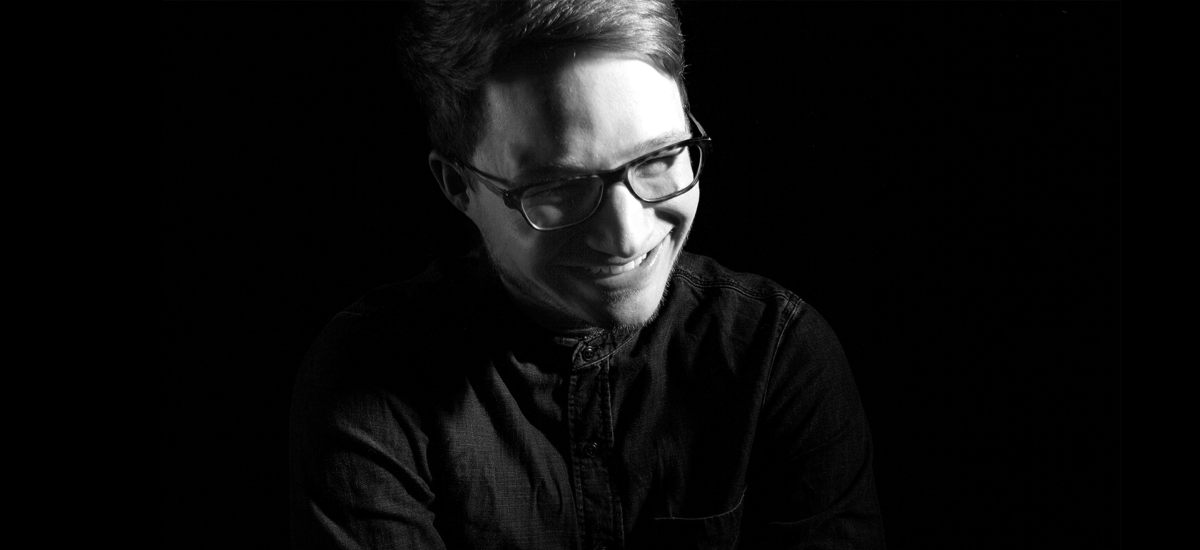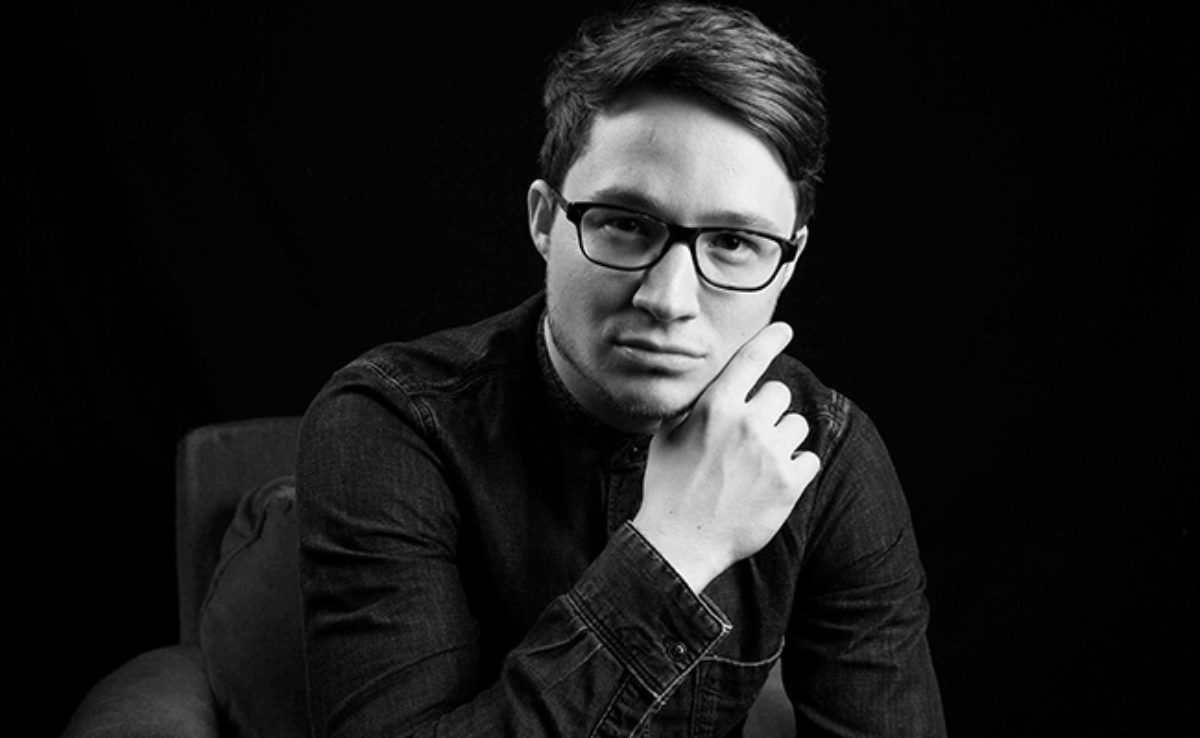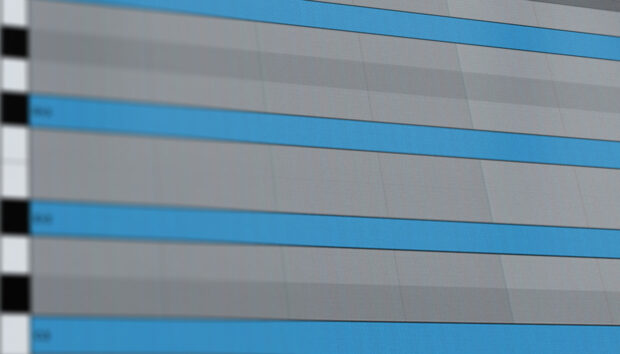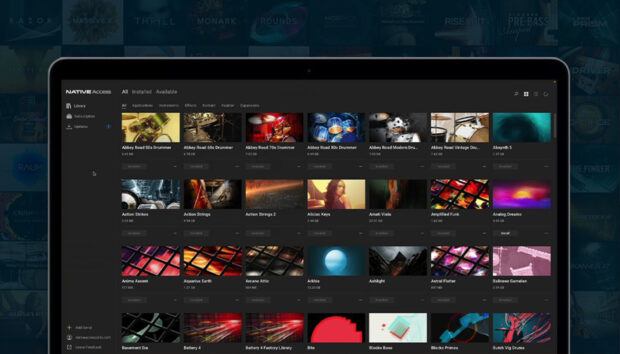
German producer and DJ, Sven Weisemann has been making music for more than ten years under various guises. He’s released two albums under his own name, and also records under his more ambient alter-egos Jouem and Desolate, the latter being the alias he recently put out new record Lunar Glyphs under with Fauxpas Musik. Throughout his many-named work, his attention to detail always stands out. Speaking to Native Instruments, Weisemann shares his musical processes, talking about the sample banks and effects chains he uses, while also sharing his love for the FM7.
“I have no classical background at all… everything I’m doing was always a self-taught thing,” Sven Weisemann says. “Of course playing the piano and some other instruments influenced my workflow, but it’s also important to have a reset button to keep things fresh and exciting.” After a five-year hiatus, Weisemann has revived his enigmatic Desolate alias to release his third ambient-leaning, garage-flecked studio album via Fauxpas Music, which like so much of his music, plays with classical instrumentation and drama.
Lunar Glyphs marries heavily struck piano chords and keys with symphonic, trip-hop subtleties, urban breakbeats, and gun clacks. It adds a fresh coat of sound to the project’s crackle of textures; melancholy, breathy vocals; and sombre tones, evolving the sound that defined debut album The Invisible Insurrection, of which Resident Advisor described as “among the best albums Burial never made,” while Pitchfork called it a “studied and meditative take on the UK bass sound that has proved especially difficult to replicate.”

“I used Kontakt a lot for the new Desolate album,” Weisemann says, “mostly for pad-sounding stuff…for orchestral stuff or creative sound design.” A strong component laced throughout all of Weisemann’s aliases is the theatrical use of classical and orchestral instrumentation, elements that lighten the sonic landscape of his often dubby, mystifying backgrounds. Recording under his Jouem alias, Weisemann exemplifies this interplay with grandeur. “Jouem is a really special project to me…my idea was to combine (Matthew) Herbert, and (Theo) Parrish with my Weisemann cosmos,” he says. “Compared to Desolate or Weisemann releases, the sound of Jouem delivers a deeper forward energy, with melodic passion and percussive nuances,” he says.
Sourcing elements from orchestral and classical sample libraries Spitfire Audio and Heavocity to fashion his sound, Weisemann revels in the realness and ‘character’ of the sample banks. Of KONTAKT, he says, “it’s a great powerful tool to play with and create recording ideas….Kontakt is always in my (processing) chain.” Weisemann highlights the track “Levitation”, recorded as Jouem, as an example of this kind of work. For the classically-inclined side of this alias, the Episodes series on Mojuba stands out most. For instance, the pleasantly dissonant piano strikes of “Reflective Sun”, and the synth-washed strings of “Hyperion” through to his most recent “Kazumi Cycle”, a veritable chamber pit of neo-dub soul.
“It’s important to find yourself and create your own trademark sound”
It’s the baroque sounds of Johann Sebastian Bach that Weisemann cites as being the most influential on his work, which combines elements like the cello, harp, and piano. Weisemann will sometimes look to the UNA CORDA ensemble, a (prepared) piano package originally developed by David Klavins, designer of the largest piano of the modern day, in collaboration with the contemporary mind of Nils Frahm. The nuance in this ensemble is that sounds resemble the ‘soft pedal’ of a grand piano whose shifting hammers strike fewer strings in the middle and upper registers, with natural resonance and softer, pure tones. “So lush and warm,” says Weisemann.
With the innards of KONTAKT and KOMPLETE working as the heart of Weisemann’s software setup, the German producer explains how he’ll dive into the “pad section” of libraries when he’s looking for bold sounds for his productions. “There are so many freedoms and possibilities with software programming,” he says. “The Gentleman is a smooth, intimate, and a warm sounding piano as well.”
Once Weisemann has chosen a tool, he can stick with it for a while, such as the FM7, a plug-in based on the classic sounds and FM synthesis of Yamaha’s DX-series. “I’m [still] using, till this day, the FM7…so ‘80s,” Weisemann says. Weisemann also notes that the Pro-53 vintage synth emulator — from “back in the day” — is also an unshakable piece of arsenal for his compositions. With his production career now spanning close to 15 years, Weisemann is evolving his music to keep up with the academic advances of classical music technology, which in turn has strengthened his ability to draw from his inspirations and influences that dive deep into a world of house music, dub techno and classical overture.
Take the sounds of “Xine Zero”, the opening track from his 2009 album, Xine. Minimal piano, a tumbling sequences of keys, and swooning cellos add nuance to the beat-down attitude, with drum sequence mirroring that of “Levitation”. Overall Xine presents the exploratory nature of Weisemann’s work, with elements augmented and interspersed across the record. The 20 pieces that constitute the record see Weisemann mix modern classical with ambient house, years before the prescient tone and genre grew to achieve mainstream success.
“It’s important to find yourself and create your own trademark sound,” Weisemann says. “If you can bring it into a sweet fresh niche for the listeners, it doesn’t matter how. Do your thing with passion and realness.”















